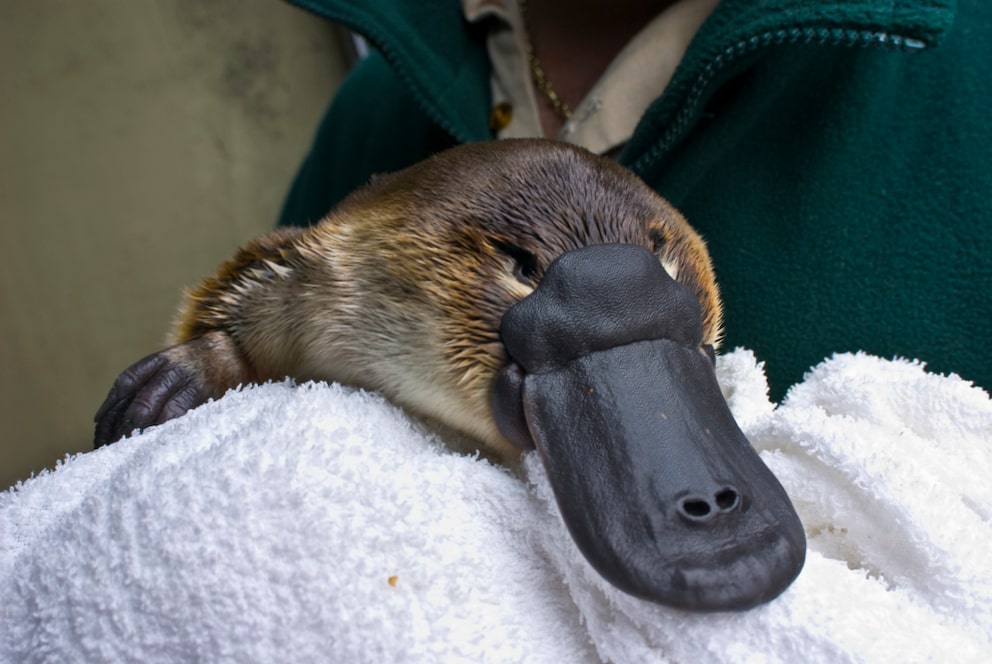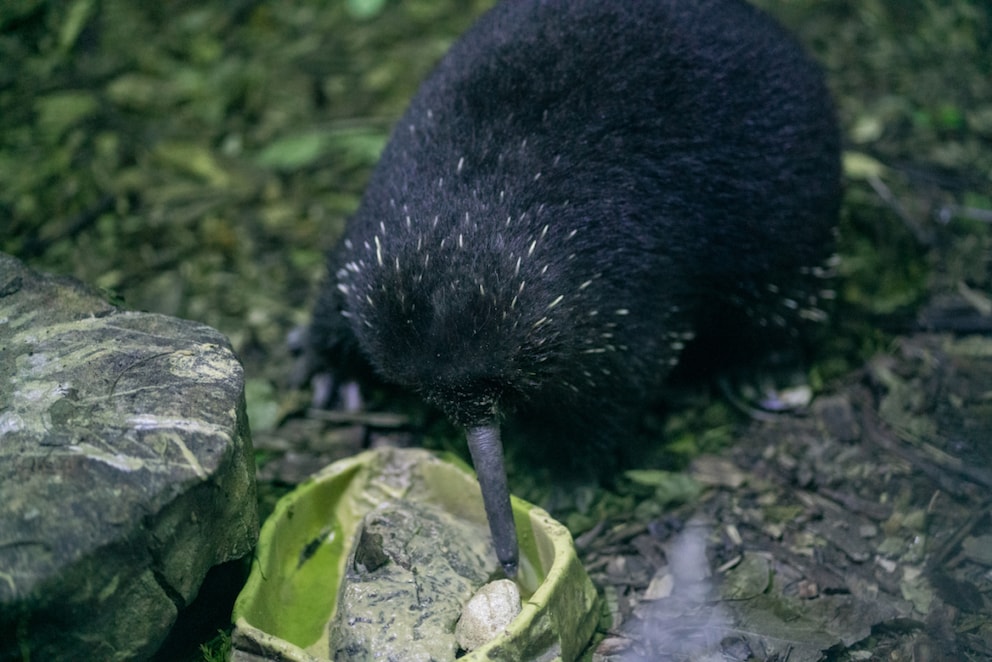May 9, 2025, 9:36 am | Read time: 5 minutes
Typically, mammals give birth to live young. However, three unusual species defy this norm. Scientists are intrigued by the phenomenon, referring to it as an “extremely rare occurrence” that took place during the development of these unique animals.
When a long-beaked echidna was rediscovered in Indonesia in mid-November 2023, it was sensational. The animal, last seen during a wildlife expedition in 1961 and dedicated to the renowned naturalist David Attenborough, had not been sighted since. What makes this small creature, which hid from science for over half a century, so special? 1 It is one of only three egg-laying mammals in the world. A study has also examined how this biological peculiarity came to be, with remarkable results.
What Makes Egg-Laying Mammals So Special
By definition, mammals are characterized by nursing their young with milk. This usually means that these animals give birth to live young and nourish them through a placenta. However, in some curious species classified as mammals—monotremes—this is not the case, as they lay eggs instead.
They are also known as prototherians and are distinguished by using a single body opening for various functions such as metabolism and reproduction. They do not nurse their young through teats that secrete milk. While the cloaca suggests a body structure similar to that of birds and that milk feeding is typical of mammals, it was long unclear how monotremes evolved at all.
But which animals are considered egg-laying mammals? Below, we introduce the individual species—and possible subspecies—of this fascinating animal family.
The Platypus
The most well-known egg-laying mammal is the platypus. In 2008, the animal’s DNA was examined, revealing that monotremes are indeed closely related to birds and reptiles. According to the DNA study, their venomous spur is attributed to their reptilian genes, while their bill likely comes from birds.
It was shown that their ancestors diverged evolutionarily from birds and reptiles about 166 million years ago. However, their genome still contains many DNA components found in these animal classes. Thus, they form an evolutionary link and are essentially a prototype of mammals that significantly changed after their emergence. 2
So how do platypuses feed their young without teats? By nursing them through the abdominal skin! The young platypuses simply find a spot on the mother’s belly and suckle until milk flows out. 3

The Long-Beaked Echidna
Less well-studied than the platypus are the other two egg-laying mammals with beaks, including the long-lost long-beaked echidna. This species likely comprises three subspecies. However, researchers see them so rarely that it is still not fully clarified whether they might also be separate species. Currently, the following groups are considered subspecies of the long-beaked echidna:
- Barton’s long-beaked echidna or eastern long-beaked echidna (Zaglossus bartoni)
- Western long-beaked echidna (Zaglossus brujini)
- Attenborough’s long-beaked echidna (Zaglossus attenboroughi)
All three subspecies are primarily found in New Guinea and Indonesia and are so rare that they are listed as critically endangered on the Red List.

The Short-Beaked Echidna
The situation becomes even more complicated with the short-beaked echidna, the third egg-laying mammal, primarily found in Australia. Some divide the species into up to six different subspecies, including the southwestern and northwestern short-beaked echidna. However, this classification is not universally accepted. It is also not yet clear whether the Tasmanian short-beaked echidna represents a separate species. As if the world of egg-laying mammals weren’t already complicated enough…
Do Egg-Laying Mammals Have an Amphibious Ancestor?
So how did it come about that monotremes lay eggs? Are they more closely related to birds, reptiles, or amphibians? A new study suggests that there is indeed a semiaquatic common ancestor. The basis for this assumption is a small 108-million-year-old bone.
This bone belongs to the extinct species Kryoryctes cadburyi, named in 2005. Externally, the bone resembles that of modern echidnas more than the platypus, initially leading to the assumption that it came from a direct ancestor of echidnas.
However, a CT scan revealed that the internal structure of the bone also shows a relationship to the platypus and could thus represent the long-lost link between the prototherian species. This single bone proves that the common ancestor of monotremes not only lived in water but also dived well with its heavy bones and was particularly adept at digging. 4

Why the platypus is the most poisonous mammal in the world

Why Birds Are Actually Reptiles

Proper Care and Maintenance of the Cumberland Slider Turtle
“Extremely Rare Event” Proven by Ancestor of Egg-Laying Mammals
The study also provides a previously unknown example of an evolutionary reversal: the return of a mammal from water to land. A similar development is documented in reptiles, particularly in sea turtles. In mammalian history, such transitions are mainly documented in the opposite direction, as described by study leader Professor Emeritus Suzanne Hand in a statement.
According to her, there are about 30 cases where mammals evolved from land dwellers to fully or partially aquatic animals, such as whales, dolphins, dugongs, seals, walruses, otters, and beavers. But a reverse development was practically unknown in mammals.
The examination of a single fossil thus has far-reaching implications: The lifestyle of the platypus dates back over 100 million years and has proven successful, while the modern echidna is likely the result of a later return to land. “We are talking about a semiaquatic mammal that gave up water to live on land, and although that would be an extremely rare event, we believe that is exactly what happened with echidnas,” Hand further assesses the groundbreaking findings.

